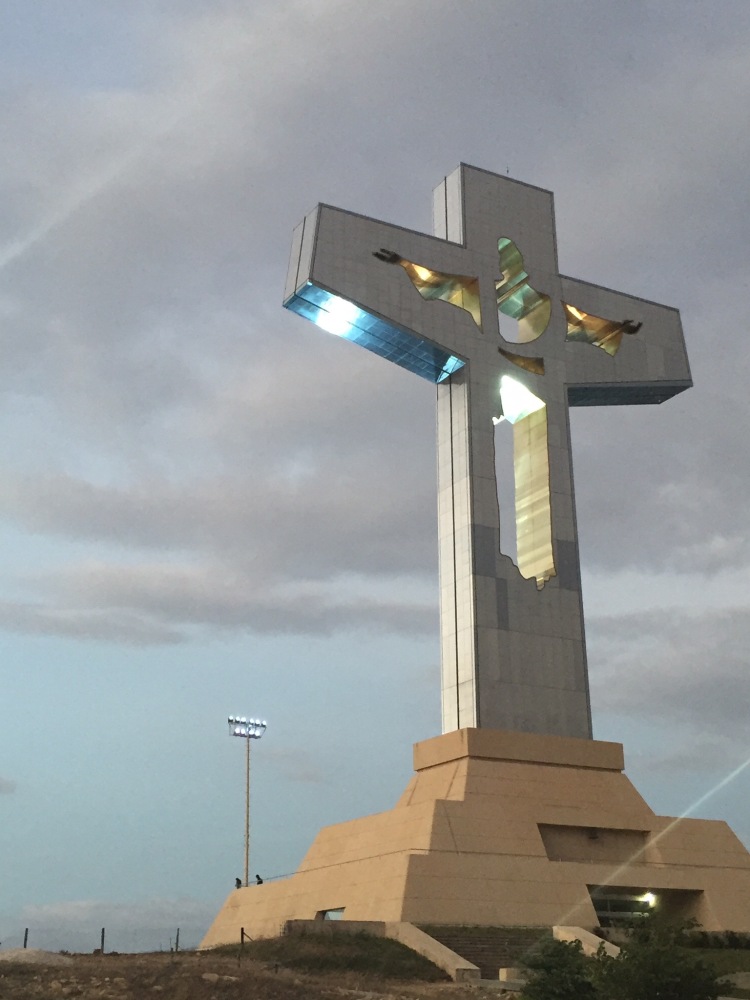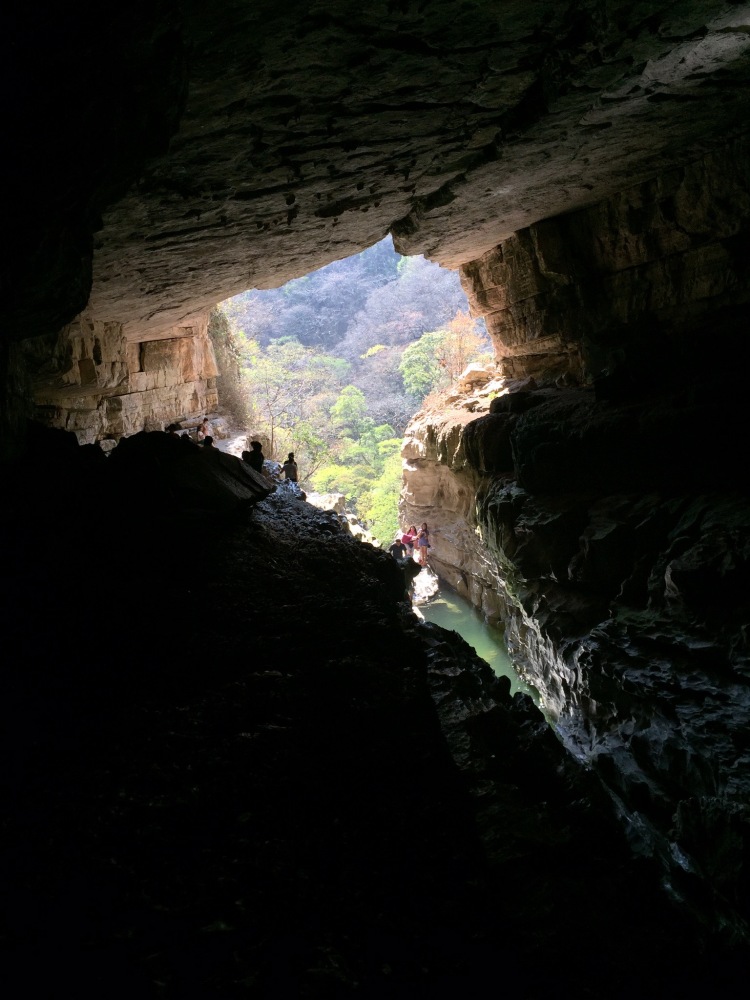As hard as it was to leave Gerardo and Norma’s hospitable Airbnb in Oaxaca, after five days, several moles and a giant tlayuda, we almost HAD to stop eating for a while. So we hopped into the Cruiser and headed for the coast. Puerto Arista, specifically, was the port of call – a very laid back Mexican beach town on the Pacific, just into Chiapas province.
Being that this was still ahead of holy week (aka Easter holidays for the Europeans, or what the Americans call…wait, the Americans don’t get holidays, never mind), we were not crowded for space at Jose’s campground. Jose, who is actually a semi-crotchety long-term Canadian expat named Joe, told me how happy he was to be in Chiapas rather than Oaxaca. “[I moved here] so I wouldn’t get busted like all my buddies at Puerto Escondido!” he said. (Far out!)
This was our first encounter on this trip with the ocean, and we were so happy that we parked and immediately ran into the very warm water. After getting back, we got our camp stove out for the first time and made some pasta with local chorizo. Satisfied it all worked, we tucked into some Mezcal we bought along the way with fellow campers Martin, Hailey and David, and slept resoundingly.

The next few days proceeded similarly – beach, then shopping, then staying out of the sun (more on this later), then beach again, then dinner. (Jose’s bathrooms were the nicest camping bathrooms we’ve yet seen, so there was a shower or two in there too, I think.) It was so hot, I even cut the sleeves off of an old shirt. Sun’s out, guns out – and by guns I mean blinding farmer tan.

Our next port of call was Tuxtla Gutiérrez, the capital of Chiapas province. Not a common multiday tourist stop, we opted to stay there instead of the more famous San Cristobal de las Casas having not found any accommodation we liked or wanted to pay for in San Cris. We are actually happy we did so – Tuxtla has its fair share of attractions, including proximity to the beautiful Canyon Sumidero.
Sumidero, which is accessed by boat tour, was a beautiful area – the photos probably don’t do it justice as the cliffs are huge. In some places, the guide in the boat told us that they went up a kilometer or more – or at least we thought that’s what he said – we were sitting at the very front of the boat, which made it feel like a private tour, but also made understanding the Spanish guidance even more challenging than usual. (And made the end of tour holdup for a tip even more eye rolling than usual.)

You can access the Sumidero boats from Chiapa de Corzo or a relatively small landing before that hamlet. While we walked through Chiapa de Corzo, we were glad to opt for the landing – the town was heaving with local tourists starting the holy week holidays.
Also notable in Tuxtla was a zoo consisting entirely of native-to-Chiapas animals, including an extensive aviary and a (perhaps too-extensive) arachnid and insect house. (After seeing a tarantula collection, you start having second thoughts about camping!)

(Carwash less than $5…and someone else does the work!)
Overlooking Tuxtla is a giant, modern statue of Christ. We were told it was even bigger than Cristo Redentor in Rio, but getting there to inspect for ourselves was an adventure. The well-paved road into the statue was blockaded by what a local said were angry taxi drivers, and if we hadn’t stopped and asked someone nearby, I’m not sure we would have figured out to drive up a block or two to go around them. (Of course, the other roads were horrific – like driving on a volcanic cliff – so I guess the point was made.)

We ate at some interesting restaurants in Tuxtla over the few nights we were there. You may have seen in a previous update my taco photo from Taquitos Casa Blanca – clearly the highlight of the culinary scene for me – but amongst others we also ate in a touristy but traditional restaurant called Las Pichanchas. They have some kind of local adult beverage called a Pumpo, which comes in some kind of deer bladder-looking . Every time one was ready to be distributed, the burly waiter would bellow “PUMPO” and ring a giant bell. Apparently the recipients were supposed to then ring the smaller bell above their table to claim the drinks. We were I think off the sauce that night, but it looked like probable fun for a larger group.

After dinner one night, we moseyed over to Marimba Square. Nightly marimba band shows in the gazebo there have attracted a dancing crowd of tourists and locals – a very animated, lively scene.
We did stop for a day trip into San Cristobal. At a certain point, all of the Spanish colonial cities start to blend together a bit, but this one was a nice respite from the heat of Tuxtla as there was a ~1500m elevation difference. There was a very clear division between the locals or Mexican tourists’ shopping street (north from the square) and the expat/gringo visitors street (packed with coffee shops and ‘cool’ restaurants, east of the square). There was also some interesting street art in San Cris – maybe there is in every Mexican city but we’d not seen it before.

After lunch, we departed back to Tuxtla, but not before stopping at a crazy cave-waterfall area outside Chiapa de Corzo called El Chorreadero. You can climb on a semi-safe pathway up to the mouth of the cave, or you can plunge deeper into the miles-long cave system – to a certain distance, also without equipment or guides. (We decided climbing in the dark was a bad idea, so we stopped not too far in.)

The water was cold, so only Melanie swam, but considering the day was around 38C in Tuxtla, even putting feet in was a godsend.

The next morning, after a fortifying taco-and-pozol breakfast stop at Casa Blanca, we drove to Palenque. We arrived just in time for Melanie to have a swim, and for me to have a beer by the pool. But what happens when you combine swimming and beer by the pool at a Mexican campground? You’ll have to wait for the next installment to find out…